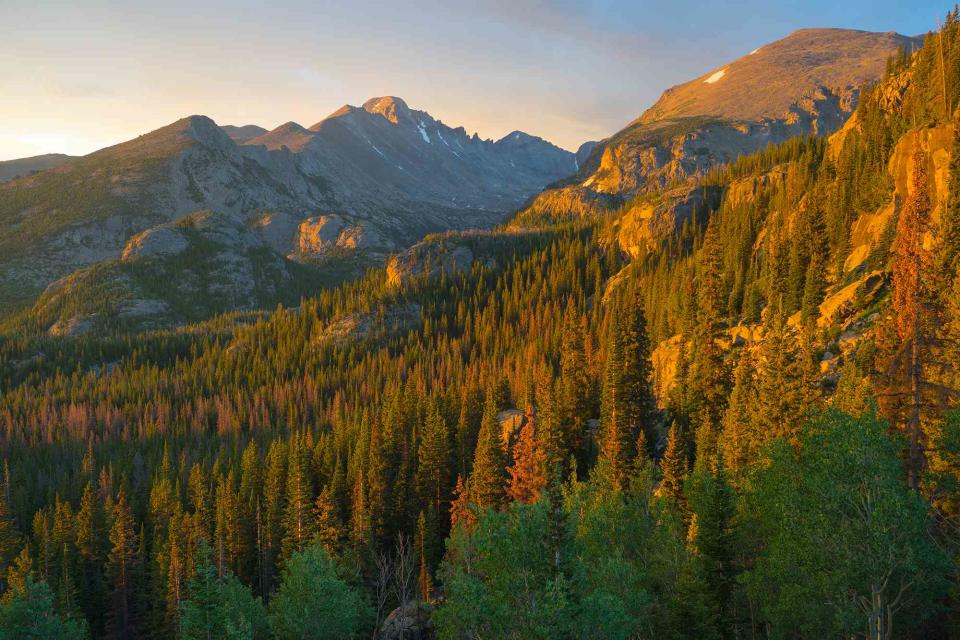These National Parks No Longer Accept Cash
Electronic card and mobile payments can be used to pay for entrance fees, campground fees, and other permits.

Lightvision, LLC/Getty Images
Bring your credit card next time you're headed to a national park as cash is a thing of the past.
The cashless trend has been growing across popular national parks from coast to coast, with parks like Rocky Mountain National Park and Death Valley National Park planning to implement no-cash policies this summer.
Going cashless actually saves money for parks, allowing them to stop spending on armored cars to transport the cash and saving time counting money and processing that paperwork, according to the National Park Service. In the case of Death Valley National Park alone, the NPS estimates it will save about $40,000 per year.
"Entrance fees are an important source of revenue national parks use to improve the visitor experience,” Greg Dudgeon, the park superintendent of Mount Rainier National Park, which will also switch to cashless payments later this month, said in a statement. “Moving to a cashless system helps the park manage visitor dollars more effectively. Going cashless reduces the amount of time park staff spend handling cash, increases the amount of fee revenue available to support critical projects and visitor services, and improves accountability while also reducing risk.”
In these parks, electronic card and mobile payments can be used to pay for entrance fees, campground fees, and other permits. These fees are used to fund things like road repairs, trail improvements, lead school field trips, and more.
Entrance fees vary by park, with many parks charging per vehicle, other mode of transportation, or per person (like Harpers Ferry National Historical Park, for example, which charges $20 per vehicle and $10 per person arriving on foot or by bicycle). Other parks, however, like Redwood National Park in California and Hot Springs National Park in Arkansas, are free year-round without any entrance fees.
These are the national parks and national historic sites that have switched or are switching to a cashless policy.
Badlands National Park, South Dakota: Find out more
Bent’s Old Fort National Historic Site, Colorado: Find out more
Chaco Culture National Historical Park, New Mexico: Find out more
Crater Lake National Park, Oregon: Find out more
Cumberland Island National Seashore, Georgia: Find out more
Death Valley National Park, California, Nevada (starting June 1): Find out more
Devils Tower National Monument, Wyoming: Find out more
Fort McHenry National Monument and Historic Shrine, Maryland: Find out more
Harpers Ferry National Historical Park, West Virginia, Virginia, Maryland (three month pilot program started April 15): Find out more
Hawaii Volcanoes National Park, Hawaii (starting May 26): Find out more
Home of Franklin D. Roosevelt National Historic Site, New York: Find out more
Isle Royale National Park, Michigan: Find out more
Little Bighorn Battlefield National Monument, Montana: Find out more
Mount Rainier National Park, Washington (starting May 26): Find out more
Pipe Spring National Monument, Arizona: Find out more
Prince William Forest Park, Virginia (three month pilot program started May 1): Find out more
Rocky Mountain National Park, Colorado (starting June 1): Find out more
Sleeping Bear Dunes National Lakeshore, Michigan: Find out more
Thomas Edison National Historical Park, New Jersey: Find out more
Vicksburg National Military Park, Mississippi, Louisiana: Find out more
Wind Cave National Park, South Dakota: Find out more
Wright Brothers National Memorial, North Carolina: Find out more
For more Travel & Leisure news, make sure to sign up for our newsletter!
Read the original article on Travel & Leisure.

